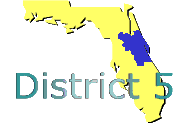| 4.0 | COMMERCIAL VEHICLE OPERATIONS |
| 4.1 | COMMERCIAL VEHICLE ELECTRONIC CLEARANCE |
| 4.1.1 | CVEC shall include a Fixed Facility consisting of those structures and equipment to include Ports Of Entry, Inspection Stations, Weigh Stations and Toll Booths. |
| 4.1.1.6 | When making the "Pass/Need To Stop" determination the FixedFacility shall perform checks on the following: |
| 4.1.1.6(a) | Vehicle/Carrier Safety Information. |
| 4.1.1.6(b) | Vehicle Credentials. |
| 4.1.1.6(c) | Driver Credentials/Status. |
| 4.1.1.6(d) | Vehicle Weight Information. |
| 4.1.1.6(e) | Tax Payment Account. |
| 4.1.2 | CVEC shall include a Vehicle System capability |
| 4.1.2.1 | Vehicle System shall provide the capability to accommodate both interstate and intrastate carriers. |
| 4.2 | AUTOMATED ROADSIDE SAFETY INSPECTION |
| 4.2.0 | Vehicle System shall provide the capability for each individual vehicle's or carrier's participation in the process to be on a voluntary basis. |
| 4.2.3 | The ARSI capability shall include a Vehicle System (VS) function. |
| 4.2.3.1 | VS shall provide a processing capability that automates the roadside inspection tasks. |
| 4.2.3.2 | The VS architecture shall provide the capability to be developed and integrated as a phased implementation. |
| 4.2.3.3 | The VS shall include those sensors needed to efficiently check vehicle systems and driver condition. |
| 4.2.3.4 | The VS shall include the capability for continuous updates to vehicle safety records or an "electronic decal/record on the vehicle. |
| 4.2.3.5 | The VS shall include an on-board safety status monitoring system that is accessible from the roadside. |
| 4.2.3.6 | The VS shall provide an initial automated inspection capability that will expedite and supplement the existing visual and manual inspection processes. |
| 4.2.3.7 | The VS shall provide a two-way Communications capability that facilitates the roadside inspection tasks. |
| 4.3 | ON-BOARD SAFETY MONITORING |
| 4.3.1 | OBSM shall include a Fixed Facility (FF) capability for the analysis and control of safety information. |
| 4.3.1.2 | The FF shall provide the capability to provide warnings of any safety problem that has been identified. |
| 4.3.1.6 | The FF shall provide the capability to perform pre-trip and post-trip inspections of each vehicle. |
| 4.3.2 | OBSM shall include a Vehicle System (VS) that is a part of each vehicle. |
| 4.3.2.1 | The VS shall provide the capability to collect and process that information required to supply those roadside facilities being encountered at mainline speeds with each vehicle's safety status to include the following: |
| 4.3.2.1(a) | Vehicle safety status. |
| 4.3.2.1(b) | Cargo safety status. |
| 4.3.2.1(c) | Driver safety status. |
| 4.3.2.1(d) | Vehicle Identification. |
| 4.3.2.1(e) | Driver Identification. |
| 4.3.2.2 | The VS shall provide the capability to alert the vehicle driver whenever there is a critical safety problem or potential emergency. |
| 4.3.2.3 | The VS shall provide the capability to have two-way data exchange between each Roadside facility encountered and the vehicle. |
| 4.4 | COMMERCIAL VEHICLE ADMINISTRATIVE PROCESSES |
| 4.4.1 | CVAP shall include an Electronic Purchase Of Credentials (EPC) function with capabilities that include but are not limited to the following: |
| 4.4.2 | CVAP shall include an Automated Mileage and Fuel Reporting and Auditing (AMFPA) function that includes but is not limited to the following: |
| 4.4.3 | CVAP shall include an International Border Electronic Clearance (IBEC) function. |
| 4.4.3.1 | IBEC provides the capability to Electronically clear for vehicles crossing international borders with those countries adjacent to the United States. IBEC shall provide the capability to clear the following: |
| 4.4.3.1(a) | Driver Clearance. |
| 4.4.3.1(b) | Cargo Clearance. |
| 4.4.3.1(c) | Vehicle. |
| 4.4.3.2 | IBEC shall have an Electronic Records function that enables certification of border crossing shipment with the verification capabilities to include but not be limited to the following: |
| 4.4.3.2(a) | Verify driver identity. |
| 4.4.3.2(b) | Verify shipper. |
| 4.4.3.2(c) | Verify Nature of cargo. |
| 4.4.3.2(d) | Verify Carrier safety. |
| 4.4.3.2(e) | Verify credential records. |
| 4.4.3.2(f) | Verify Duties Paid. |
| 4.4.3.2(g) | Verify Vehicle Identity. |
| 4.4.3.2(h) | Verify Vehicle Weight. |
| 4.6 | COMMERCIAL FLEET MANAGEMENT |
| 4.6.0 | ITS shall include a Commercial Fleet Management (CFM) function. |
| 4.6.1 | CFM shall include the capability for users to provide commercial drivers and dispatchers with real-time routing information in response to congestion or incidents. |
| 4.6.2 | CFM shall provide the capability for real-time communication between the following: |
| 4.6.2(a) | Vehicle Drivers. |
| 4.6.2(b) | Dispatchers. |
| 4.6.2(c) | Intermodal Transportation Providers. |
| | |




